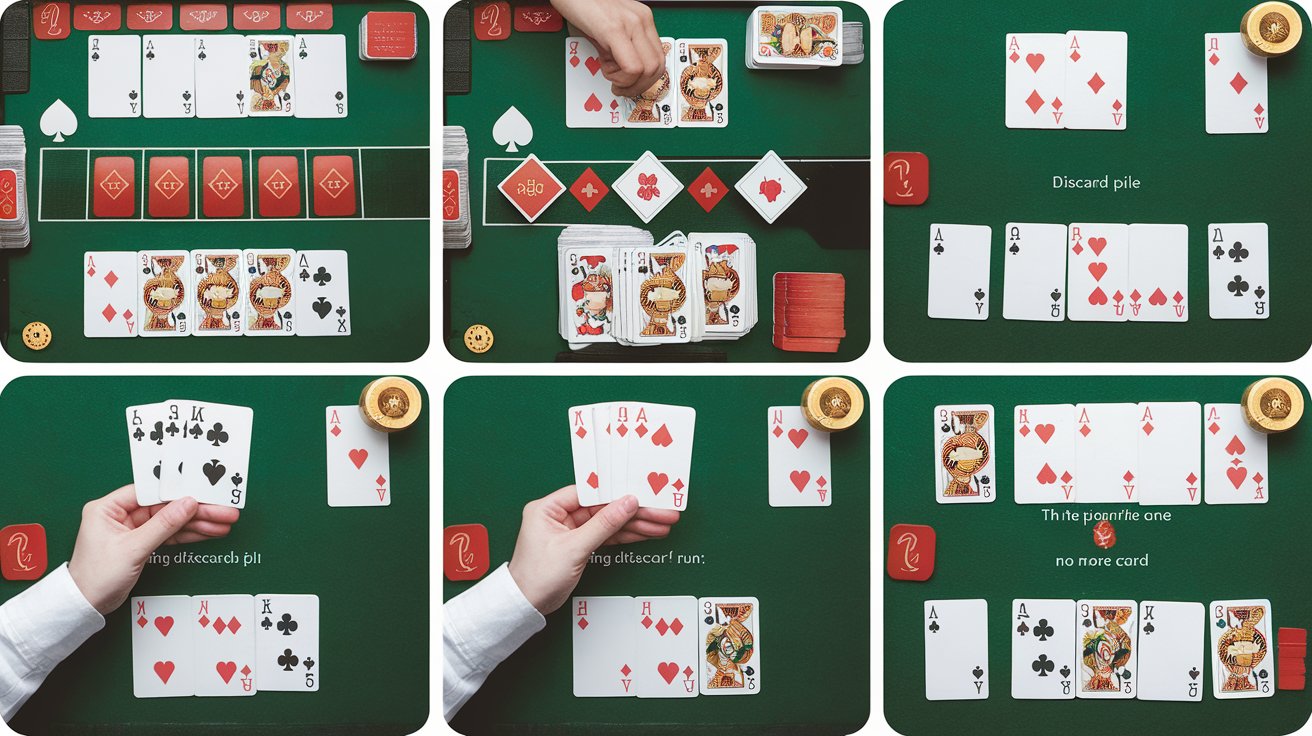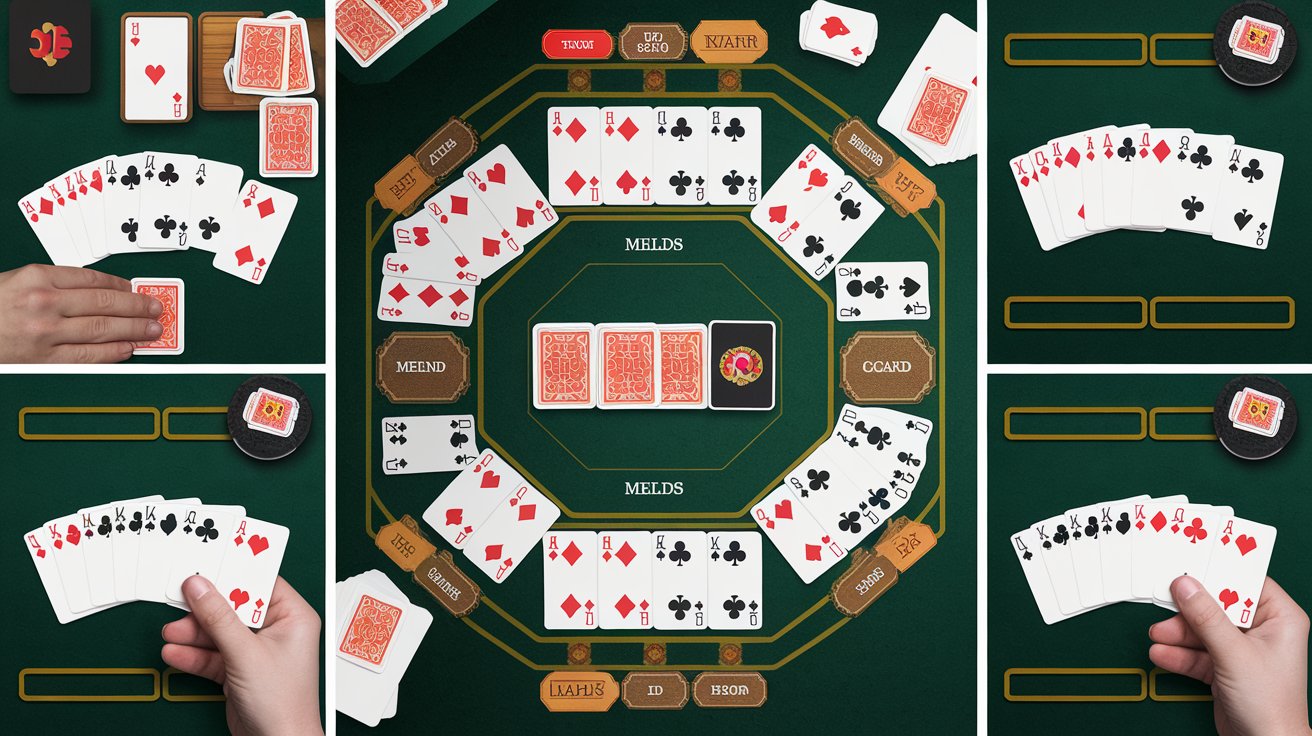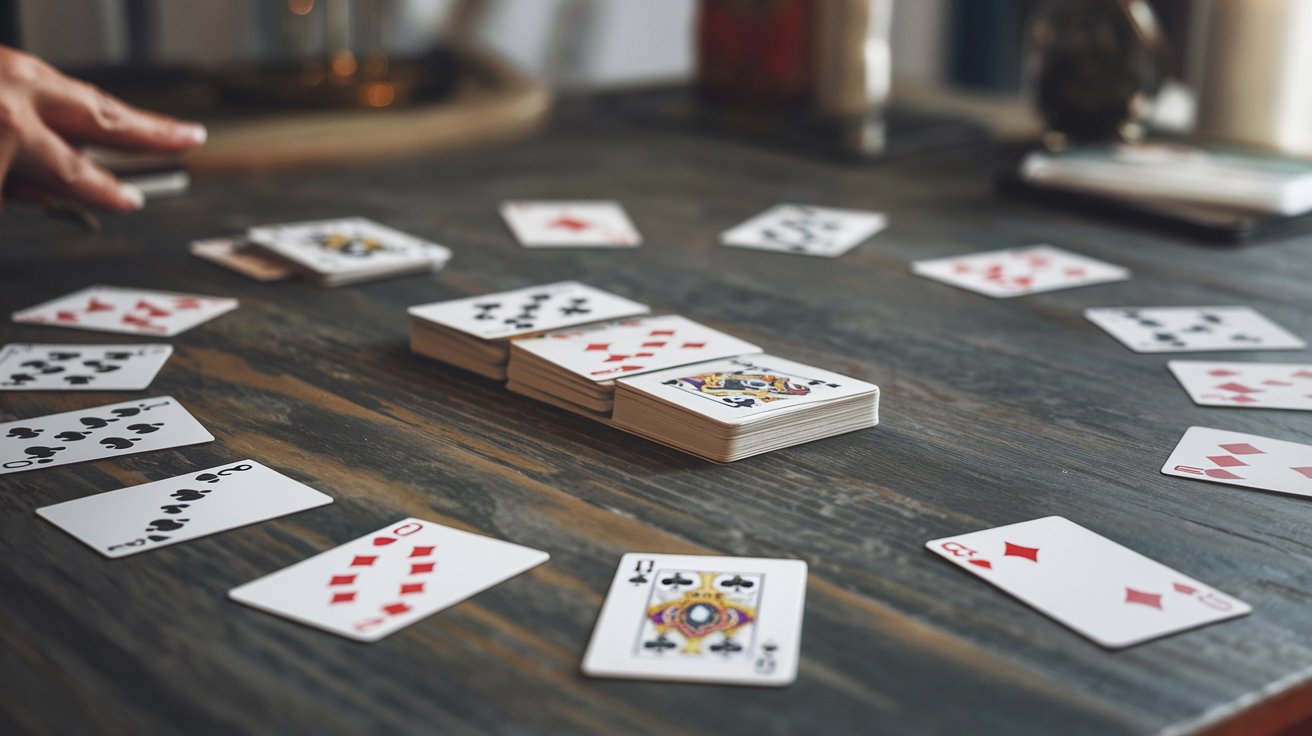Shanghai Rummy (also known as California Rummy or Contract Rummy) is a fascinating card game that combines elements of traditional Rummy with increasingly challenging contracts. This engaging game is perfect for game nights with family and friends, offering the right balance of strategy, skill, and luck. Whether you’re a beginner looking to learn the basics or an experienced player wanting to refine your strategy, this comprehensive guide will walk you through everything you need to know about playing Shanghai Rummy.
What is Shanghai Rummy?

Shanghai Rummy is a contract rummy game played with 2-8 players, though 4-6 players is often considered ideal. The game consists of multiple deals (usually 7-10), with each deal requiring players to fulfill increasingly difficult contracts. These contracts typically involve creating specific combinations of cards such as sets (three or four of a kind) and runs (sequences of consecutive cards in the same suit).
What makes Shanghai Rummy particularly engaging is its progressive nature—as the game advances, the contracts become more challenging, requiring more strategic thinking and careful planning.
Equipment Needed
Before diving into the gameplay, let’s gather the necessary equipment:
- Playing Cards: You’ll need two standard 52-card decks (including jokers) for 2-4 players. For 5 or more players, use three decks.
- Scoring Pad and Pencil: To keep track of points throughout the game.
- Table Space: Ensure you have enough room for discards, the draw pile, and for players to arrange their hands.
Basic Terminology
Understanding the key terms in Shanghai Rummy will help you grasp the gameplay more easily:
- Set: Three or four cards of the same rank but different suits (e.g., three Kings or four 7s).
- Run: A sequence of consecutive cards of the same suit (e.g., 5-6-7-8 of hearts).
- Contract: The specific combination of sets and runs a player must create in each deal.
- Going Out: Successfully discarding your last card after fulfilling your contract.
- Going Down: Laying down your contract on the table.
- Wild Cards: Jokers and sometimes designated cards (often 2s) that can substitute for any card.
The Contracts
Shanghai Rummy typically features seven deals, each with a different contract:
- Two Sets
- One Set and One Run
- Two Runs
- Three Sets
- Two Sets and One Run
- One Set and Two Runs
- Three Runs
Some variations include additional contracts like “Four Sets” or “Four Runs,” or might arrange the contracts in a different order. Make sure all players agree on the contracts before starting the game.
Setup and Dealing

Follow these steps to set up your Shanghai Rummy game:
- Choose a dealer: This can be done randomly (e.g., by drawing cards, with the lowest card becoming the dealer).
- Shuffle thoroughly: Since you’re using multiple decks, ensure they’re well mixed.
- Deal cards: The number of cards dealt depends on which contract you’re playing:
- For contracts requiring 2 combinations: Deal 10 cards to each player
- For contracts requiring 3 combinations: Deal 11 cards to each player
- For contracts requiring 4 combinations (if playing): Deal 12 cards to each player
- Create the draw pile: Place the remaining cards face-down in the center of the table.
- Start the discard pile: Turn the top card of the draw pile face-up to start the discard pile.
Gameplay Rules
Now let’s delve into how to actually play the game:
Basic Turn Structure
On your turn:
- Draw a card either from the top of the draw pile or the top card from the discard pile.
- Fulfill your contract (if possible) by laying down the required combinations.
- Discard one card face-up onto the discard pile to end your turn.
Wild Cards
Wild cards add an exciting element to Shanghai Rummy:
- Jokers are always wild.
- In many variations, 2s are also wild.
- A wild card can represent any card needed to complete a set or run.
- Restrictions may apply: typically, you cannot have more wild cards than natural cards in a combination.
Going Down
When you’re ready to fulfill your contract:
- Place your contract combinations face-up on the table.
- This is called “going down” or “melding.”
- You must complete your entire contract at once—you cannot lay down part of it on one turn and the rest on another.
Adding to Existing Melds
After you’ve gone down (or after another player has gone down):
- You can add cards to your own combinations or to other players’ combinations.
- For sets, you can add the fourth card of the same rank.
- For runs, you can add cards that extend the sequence (e.g., adding a 4 or a 9 to a run of 5-6-7-8).
Going Out
The goal of each deal is to be the first to go out:
- After fulfilling your contract, work to discard all remaining cards in your hand.
- You go out by discarding your final card.
- The deal ends immediately when a player goes out.
- If the draw pile is exhausted before anyone goes out, reshuffle the discard pile (except the top card) to create a new draw pile.
Scoring
Keeping score properly is crucial in Shanghai Rummy:
Positive Points (for the winner)
- The player who goes out first receives a bonus (typically 25 points).
Negative Points (for other players)
- Each player counts the point value of cards remaining in their hand:
- Ace: 15 points
- King, Queen, Jack: 10 points
- Number cards (10 to 3): Face value
- 2s (if not wild): 20 points
- Jokers and wild 2s: 25 points
The player with the lowest total score at the end of all deals wins the game.
Advanced Strategies

As you become more familiar with Shanghai Rummy, consider these strategies to improve your game:
Card Management
- Monitor the discard pile carefully to see what cards other players need or don’t want.
- Keep your options open early in the hand by collecting cards that could work for different combinations.
- Discard high-point cards when possible to minimize penalties if another player goes out.
Contract Fulfillment
- Work toward your contract from the beginning instead of collecting random cards.
- Consider holding onto wild cards until you’re certain how to use them most effectively.
- Watch other players’ picking patterns to deduce what combinations they might be working on.
Timing
- Go down as soon as possible once you have your contract to start working on getting rid of remaining cards.
- Consider strategic discards that don’t help opponents while working toward your own goal.
- When near the end, remember that the draw pile can be exhausted—plan accordingly.
Common Variations
Shanghai Rummy has several popular variations that add different elements to the game:
Different Contracts
Some groups play with different contract progressions or additional contracts like:
- Four Sets
- Three Sets and One Run
- Two Sets and Two Runs
- One Set and Three Runs
- Four Runs
Buy-In Option
- Players can “buy” the top card of the discard pile even if it’s not their turn by paying a penalty (typically 5 points).
- The player must then draw an additional card from the draw pile.
Different Wild Card Rules
- Some variations only use Jokers as wild cards.
- Others designate both 2s and Jokers as wild.
- Some groups play with “bought” wildcards that cost points to use.
Limited Picking from Discard Pile
- Some variations only allow picking the top discard if it can immediately be used in a combination.
Etiquette and Tips for Beginners
Game Etiquette
- Be patient with new players learning the game.
- Avoid excessive table talk that could give away information about your hand.
- Keep your discards visible to all players.
Tips for Beginners
- Start with simpler variations until you understand the basic mechanics.
- Focus on completing your contract first before worrying about going out.
- Watch experienced players to learn their strategies.
- Don’t hold onto too many high-point cards as they’ll count against you if someone else goes out.
Troubleshooting Common Issues
“I can never complete my contract!”
- Focus on collecting cards that work toward your specific contract.
- Don’t be afraid to discard cards that don’t contribute to your contract, even if they might be useful later.
“Someone always goes out before I can!”
- Work on your contract from the beginning rather than collecting random cards.
- Go down as soon as you can fulfill your contract, even if you still have many cards in hand.
“I’m not sure when to use my wild cards.”
- Hold wild cards until you’re certain how they’ll be most valuable.
- Use them to complete difficult combinations rather than ones you could complete naturally.
Conclusion
Shanghai Rummy offers a perfect blend of skill, strategy, and luck that makes each game unique and engaging. The progressively challenging contracts ensure that players remain engaged throughout the entire game, while the scoring system rewards strategic thinking and quick adaptation.
Whether you’re hosting a game night with friends or looking for a new card game to master, Shanghai Rummy provides hours of entertainment with relatively simple rules but deep strategic possibilities. Start with the basic rules outlined in this guide, then feel free to explore the various variations to find the version that best suits your group’s preferences.
Remember, like any card game, Shanghai Rummy becomes more enjoyable as you gain experience. Don’t be discouraged if your first few games feel challenging—with practice, you’ll develop your own strategies and approaches that make the game even more rewarding.
So gather your cards, set up your table, and embark on an exciting Shanghai Rummy adventure with friends and family!

Zareb Saleh is a journalist at Gulf Today and a ghostwriter for Gameoholic, specializing in gaming, technology, and digital culture. With a keen eye for industry trends, he delivers insightful stories that engage and inform readers.




